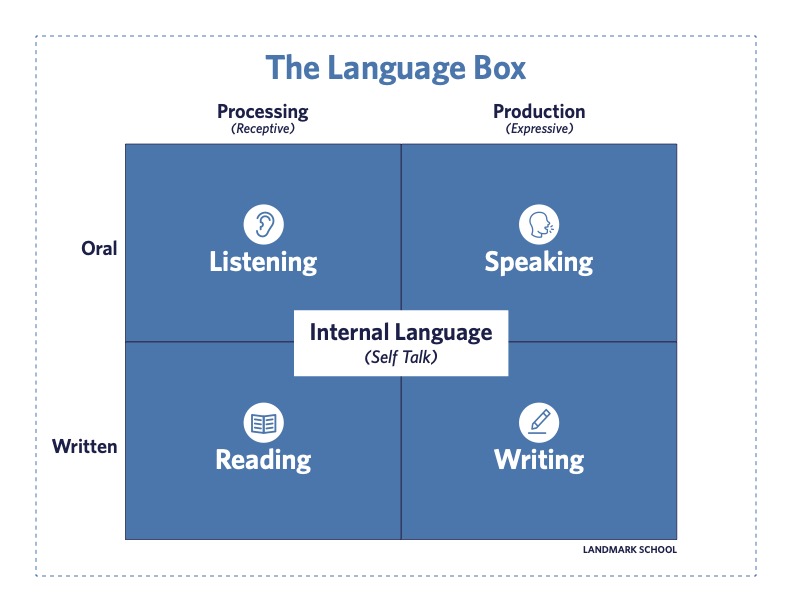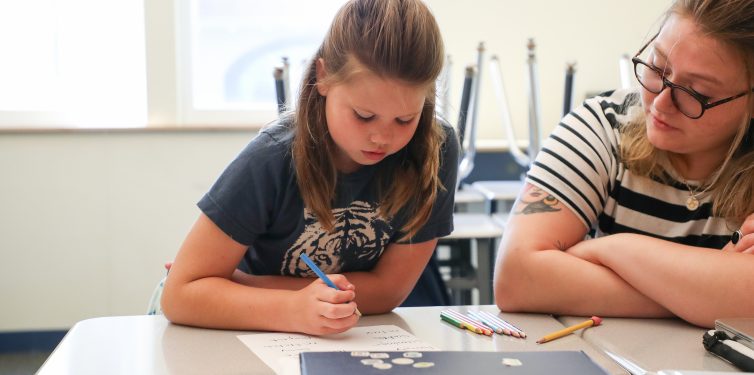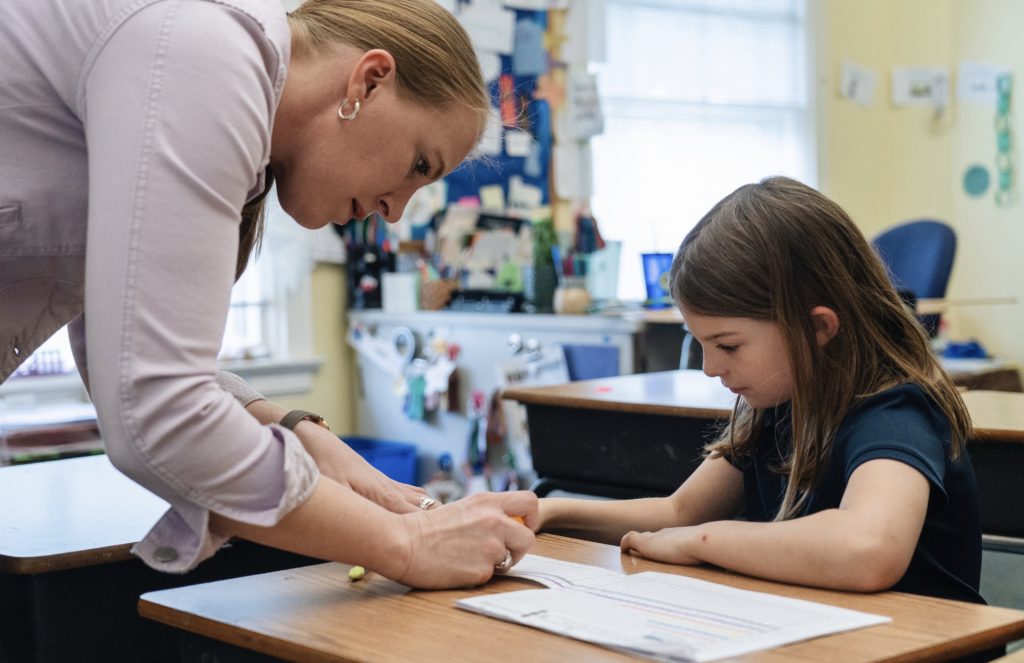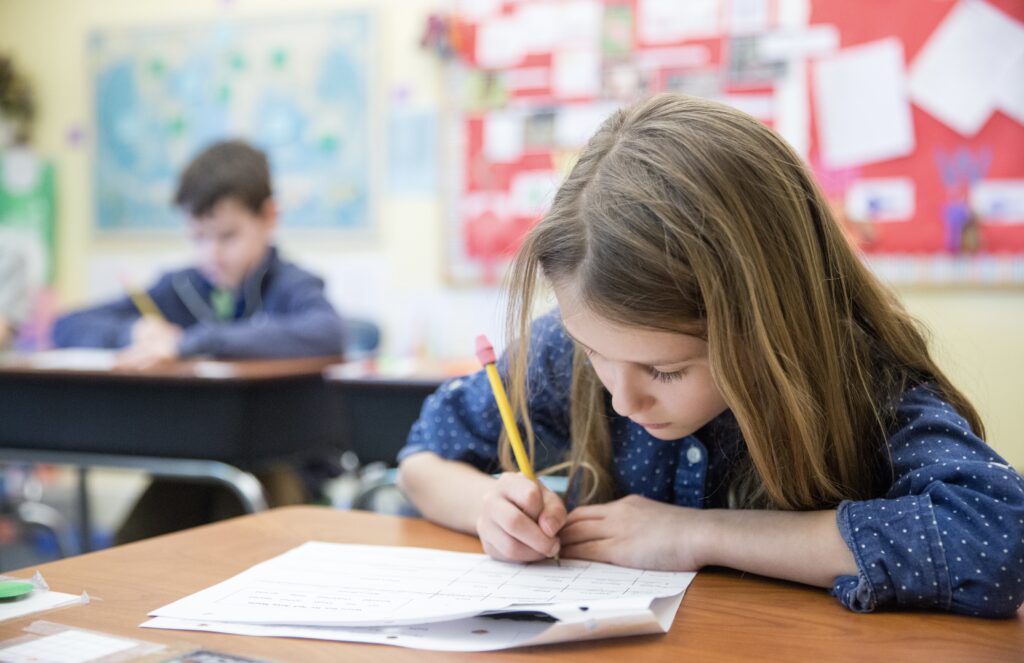Social Communication and The Language Box™
The Language Box™ shown below displays the four areas of language. Social communication (pragmatic language) skills are often considered within the context of speaking and listening tasks or face-to-face interactions. Additionally, specific features of reading comprehension and written expression require social communication proficiency that should be recognized and addressed (ASHA, n.d.).

Let’s take a closer look at how pragmatic language skills (social communication) intersect with these four language areas:
Listening Comprehension
Simply put, listening comprehension refers to the ability to understand spoken language. However, it is much more nuanced. There are elements of listening that highlight the relationship to pragmatic language. Listenwise refers to the work of Dr. Sophie Haroutunian-Gordan in identifying these elements as situation-specific, the role of the listener, and the relationship between speaker and listener (Listenwise, 2022). An individual with poor listening comprehension may have difficulty following instructions, recognizing subtle changes in tone, and understanding figurative language, humor, and sarcasm, all of which connect to pragmatic language.
Oral Expression
Oral expression is the ability to communicate needs, thoughts, ideas, and information through speaking. Of note, “…individuals may use augmentative and alternative communication (AAC) to replace or supplement spoken language” (ASHA, n.d.). However, effective communication entails more than “just” speaking. How we use spoken language impacts the message or interaction. To effectively communicate, we choose the words, tone of voice, body language, etc., that align with the situation and listener(s). A student with a pragmatic language disorder may have trouble with these skills, which in turn can impact their social interactions.
Reading Comprehension
The link between reading comprehension and social communication is apparent when we read stories of human interactions in history books, explore character relationships in literature, and even interpret social scenarios in a math word problem. This extends to reading a social media post, email, text message, or newspaper article. Successful readers understand figurative language, make connections to prior knowledge and experiences, make inferences and predictions, analyze relationships among characters, empathize or sympathize with a character, understand another’s perspective, and identify tone/emotion. A student with social communication difficulties may struggle with the aforementioned skills and with comprehending a text fully.
Written Expression
The connection between written expression and social communication is evident when writing a personal narrative, an opinion essay, or a character analysis. We also use social communication skills when writing a blog article, email, text message, or social media post. When producing writing, successful writers consider their audience/reader, state opinions, persuade others, use tone and emotion, and use punctuation to communicate intent. Many of these skills can be challenging for students with social communication difficulties.
In sum, students with social communication disorders may present with challenges in one or more of the language areas — listening, speaking, reading, and writing. This not only impacts academic success, but can also overlap with their social-emotional learning (SEL). Providing explicit social skill instruction and feedback allows them to reach their academic potential and strengthens their SEL.
References
American Speech-Language-Hearing Association. (n.d.). Language in brief. https://www.asha.org/practice-portal/clinical-topics/spoken-language-disorders/language-in-brief
Listenwise. (n.d.). Listening comprehension. https://listenwise.com/listening_comprehension



